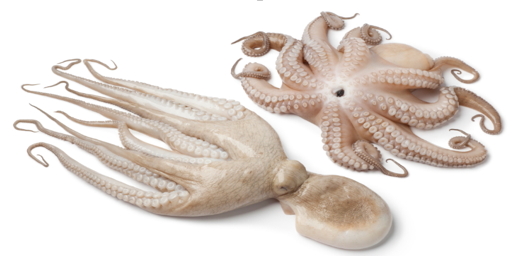Taurine
What is Taurine?
Containing sulfur, taurine is organic
acid that exists in cells and tissues of humans and other mammals. In 1827, it
was first separated from the bile of a cow, by Australian chemists Friedrich
Tiedemann and Leopold Gmelin. It was named after a Greek word for a cow.
Taurine is β-amino acid where amino group is attached to β-carbon of the
molecular structure. Instead of Carboxyl group, sulfonic acid group whose pK
value is lower, is substituted to α-carbon. Therefore, it is easily ionized
even in lower pH, compared to other amino acid.
Taurine is not used for the biosynthesis
of protein. Instead, it exists in the tissues and human biofluid of most
animals, in rich free amino acids. In addition, taurine is recognized and
highlighted these days, since it has the advantage of no accumulation or
toxicity in the body even in case of intake in high concentration.
Taurine is rich contained in sea food
including squid, short arm octopus, and octopus, as well as in the bile of a
cow.

ㅣSource of supply Taurine, octopus
Effect of taurine
1. Improving eyesight function and
preventing amblyopia
Taurine inhibits the peroxidation of retinular membrane called multiple
unsaturated fatty acid, being influenced by ultraviolet ray and other factors.
This stabilizes the retina structure to protect retina. To the contrary, when
taurine lacks in the human body, the function of retina can be degenerative to
make lose one’s eye sight. Therefore, the intake of taurine is required for the
eye health.
2. Fatigue recovery
Taurine not only supplies moisture for cells, but also increases bile acid
generated by liver, to help your fatigue recovery.
3. Antiobesity effect
Based on fat breakdown system, taurine suppresses obesity, by increasing gene
expression level of glycometabolism system and adjusting fatty tissues.
4. Maintaining the function of
cardiovascular system
Taurine suppresses the formation of LDL cholesterol that causes artery
hardening, angina and myocardial infarction, and is effective in the prevention
of a variety of blood vessel system disorders and platelet blood clot by
increasing the amount of HDL cholesterol that breaks up cholesterol intruded
into blood vessel tissues.
5. Adjusting the function of central
nervous system
Taurine adjusts the functions of central nervous system by strengthening the
functions of hippocampus and blocking neurotransmitter because it can pass
through Blood Brain Barrier(BBB).
Related Articles
1. Ameliorative
effects of taurine against methimazole-induced cytotoxicity in isolated rat
hepatocytes.(Heidari R1, Babaei H, Eghbal MA. Sci Pharm. 2012 Dec;80(4):987-99.)
: Taurine reduces
hepatotoxicity created by the administration of methimazole stroke (antithyroid
drug).
2. Taurine
and liver diseases: a focus on the heterogeneous protective properties of
taurine. (Miyazaki T1, Matsuzaki Y. Amino Acids. 2014 Jan;46(1):101-10. )
: Taurine is useful
substance for therapy for damaged liver.
3. Taurine
provides neuroprotection against retinal ganglion cell degeneration. (Froger
N1, Cadetti L, Lorach H, Martins J, Bemelmans AP, Dubus E, Degardin J, Pain D,
Forster V. PLoS One. 2012;7(10):e42017. )
: Taurine provides
neuroprotection against retinal ganglion cell degeneration.

